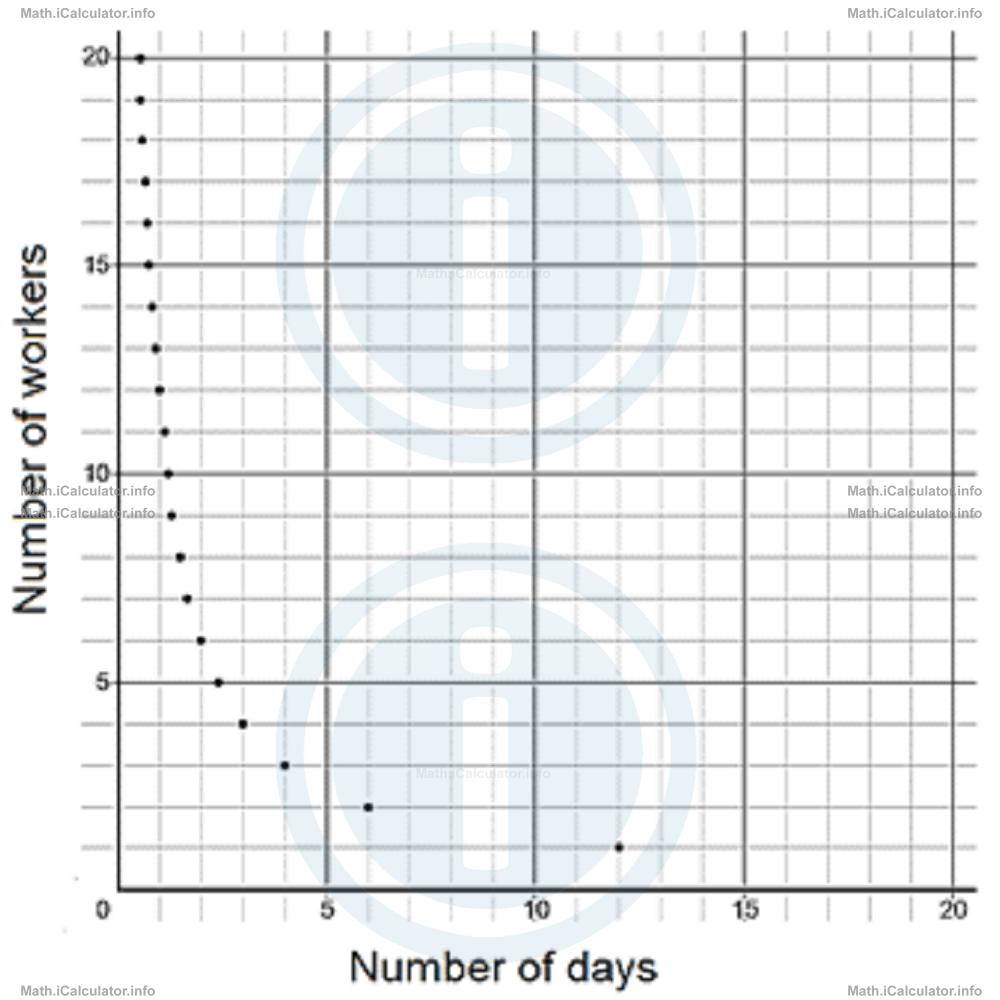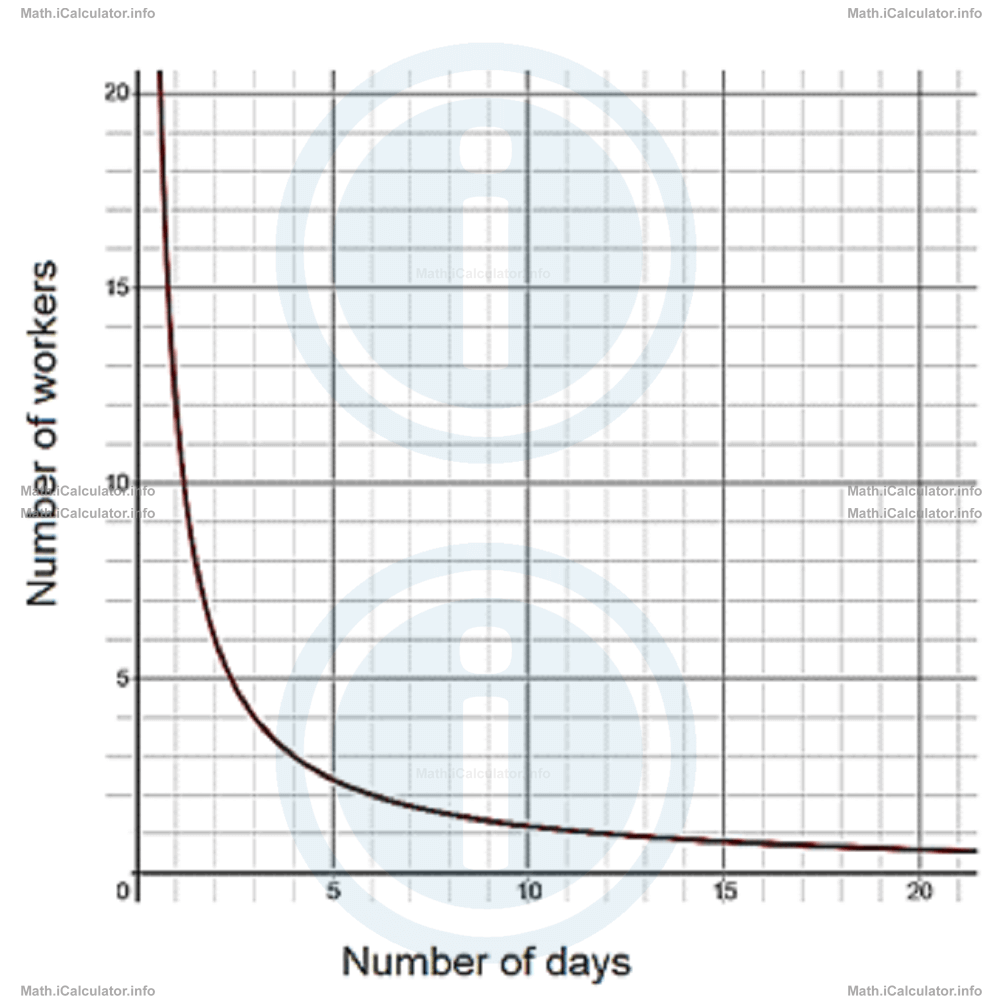Menu
Math Lesson 4.5.2 - The Difference between Proportion and Variation
Please provide a rating, it takes seconds and helps us to keep this resource free for all to use
Welcome to our Math lesson on The Difference between Proportion and Variation, this is the second lesson of our suite of math lessons covering the topic of Variation. Types of Variation, you can find links to the other lessons within this tutorial and access additional Math learning resources below this lesson.
The Difference between Proportion and Variation
As we said above, the concepts of proportion and variation are very similar. However, despite the similarity, they have their differences that make these two concepts distinguishable from each other.
The first difference lies in the fact that a proportion does not necessarily involve related terms, i.e. the existence of one term of proportion does not necessarily imply the existence of the other term. For example, when we say that three sisters A, B and C share everything the family owns in the ratio 3:4:5, we can form the proportion A:B:C = 3:4:5, but this proportion does not necessarily involve the existence of money to share. They can share everything else but money. Hence, when we say that an amount of $1200 has to be shared among the three sisters in the way described above, we are not referring to a variation but to a proportion instead, as the existence of the three sisters does not necessarily imply the existence of money to share.
The second difference lies in the fact that proportion is limited to a finite number of terms while variation includes a much wider range of terms related with each other through a formula. This leads to the plotting of a graph that includes all possible ordered pairs, where the first of values in each pair is always from the first set of values, while the second term from the second set. Variation therefore is a more inclusive concept than proportion, as practically it includes an infinite number of combinations which meet the condition indicated in the formula.
Many situations we have used in the previous tutorial of this chapter to illustrate proportions, are in fact examples of variation. For example, the number of workers needed to complete a job versus the time needed to do the job can be considered either as an inverse proportion when we use a real-life approach (as the number of workers involved is practically finite), but also as a variation if we approach the situation mathematically, where the number of people involved in the process can be assumed as infinite (or when we consider not only the whole values). In the second case, we can plot a graph where the line is continuous, while if we consider the situation from the proportion viewpoint, the graph represents a set of dots representing the number of people versus the time taken to complete the job. Look at the figures below, where the relationship Number of people = 12/Time taken is shown based on the two above-mentioned approaches.
- Proportion approach
Here, the number of people is discrete, i.e. it can only be a whole number. As a result, we cannot extend the graph more on the right of 12, as there cannot be less than one person working. As for the left part of the graph, it contains more points as the number of people can increase as much as we want - an action that brings a reduction in the working time.
- Variation approach
This time, we neglect the restriction of the discrete number of people and we assume the two values as real numbers. Therefore, the graph will be an uninterrupted line (in tutorial 4.3 we called it "hyperbola").
More Variation. Types of Variation Lessons and Learning Resources
Whats next?
Enjoy the "The Difference between Proportion and Variation" math lesson? People who liked the "Variation. Types of Variation lesson found the following resources useful:
- Difference Feedback. Helps other - Leave a rating for this difference (see below)
- Ratio and Proportion Math tutorial: Variation. Types of Variation. Read the Variation. Types of Variation math tutorial and build your math knowledge of Ratio and Proportion
- Ratio and Proportion Video tutorial: Variation. Types of Variation. Watch or listen to the Variation. Types of Variation video tutorial, a useful way to help you revise when travelling to and from school/college
- Ratio and Proportion Revision Notes: Variation. Types of Variation. Print the notes so you can revise the key points covered in the math tutorial for Variation. Types of Variation
- Ratio and Proportion Practice Questions: Variation. Types of Variation. Test and improve your knowledge of Variation. Types of Variation with example questins and answers
- Check your calculations for Ratio and Proportion questions with our excellent Ratio and Proportion calculators which contain full equations and calculations clearly displayed line by line. See the Ratio and Proportion Calculators by iCalculator™ below.
- Continuing learning ratio and proportion - read our next math tutorial: Ratios
Help others Learning Math just like you
Please provide a rating, it takes seconds and helps us to keep this resource free for all to use
We hope you found this Math tutorial "Variation. Types of Variation" useful. If you did it would be great if you could spare the time to rate this math tutorial (simply click on the number of stars that match your assessment of this math learning aide) and/or share on social media, this helps us identify popular tutorials and calculators and expand our free learning resources to support our users around the world have free access to expand their knowledge of math and other disciplines.
Ratio and Proportion Calculators by iCalculator™
- Geometric Mean Calculator
- Joint Variation Calculator
- Ratio Calculator
- Ratio Solver
- Ratio Addition Calculator
- Ratio Subtraction Calculator
- Ratio Division Calculator
- Ratio Multiplication Calculator
- Relative Ratios Calculator
- Ratio Comparison Calculator
- Visual Ratio Calculator
- Ratio Finder
- Equivalent Ratios Calculator
- Equivalent Ratio Table Calculator
- Aspect Ratio Calculator
- Divide Ratio Calculator
- Ratio Divider Calculator
- Ratio Simplifier Calculator
- Golden Ratio Calculator
- 3 Ratio Calculator
- Sharing Ratio Calculator
- Equal Share Verse Ratio Share Calculator
- Values To Ratio Calculator
- Ratio Table Calculator
- Ratio Table
- Decimal Ratio Table Calculator
- Ratio Table Creator
- Ratio Converter
- Percentage To Ratio Calculator
- Ratio To Percentage Calculator
- Ratio To Fraction Calculator
- Fraction To Ratio Calculator
- Ratio To Decimal Calculator
- Decimal To Ratio Calculator
- Values To Ratio Calculator
- Which Ratio Or Fraction Is Bigger
- Which Ratio Or Percentage Is Bigger
- Which Ratio Is Bigger